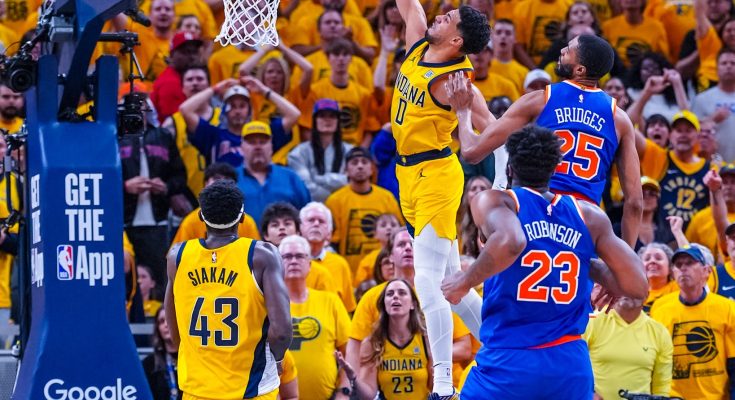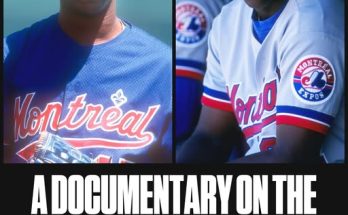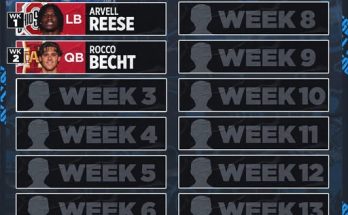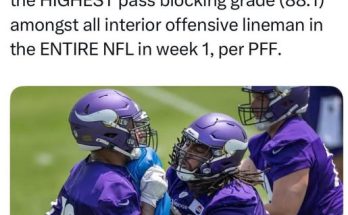The buzz around the Indiana Pacers organization has reached a fever pitch with the recent announcement that they have officially signed guard Taelon Peter to a two-way contract. This isn’t just another routine roster move; it’s a statement, a strategic play that speaks volumes about the Pacers’ commitment to player development, their keen eye for overlooked talent, and their vision for building a sustainable future. For fans and aspiring basketball players alike, this signing offers a fascinating glimpse into the intricate world of NBA roster construction and the unique opportunities afforded by the two-way contract system.
To truly appreciate the significance of Taelon Peter’s journey to the Pacers, one must first understand the path he has carved. Peter, a 6-foot-4 sharpshooting guard, isn’t your typical one-and-done collegiate star. His basketball odyssey is a testament to perseverance and unwavering dedication. He began his collegiate career at Tennessee Tech, where he saw limited action, playing in just six games. This early setback, however, did not deter him. Instead, it fueled his resolve. He made a pivotal decision to transfer down to NCAA Division II, joining Arkansas Tech. This move, which might seem counterintuitive to some, proved to be a masterstroke for his development. At Arkansas Tech, Peter blossomed, transforming into a formidable force. He didn’t immediately become a starter, initially coming off the bench for 25 games in his first season there, but his efficiency was undeniable, averaging 10 points on impressive shooting splits of 50% from the field, 40% from three-point range, and 80% from the free-throw line. Over the next two seasons at Arkansas Tech, he earned a starting role, averaging 15.5 points in 2022-23 and then a stellar 18.5 points in 2023-24, earning Great American Conference (GAC) Player of the Year and first-team All-GAC honors. His three-year stint at Arkansas Tech saw him average 15 points and 5.2 rebounds, showcasing his all-around growth.
But Peter’s ambition wasn’t confined to Division II. For his final year of eligibility, he made another bold jump, transferring back to NCAA Division I to play for Liberty University. Here, he embraced a crucial role off the bench, starting just two of 35 games, yet he still managed to average 13.7 points in just 22.7 minutes per contest. What truly set him apart were his absurdly efficient shooting percentages: 57.8% from the field and an astounding 45.3% from beyond the arc. He also led the Conference USA in free throw shooting and was the national leader in true shooting percentage (), a comprehensive metric that weighs field goal and free throw efficiency. This elite-level scoring and remarkable efficiency, especially considering his role as a sixth man, put him squarely on the NBA’s radar. He was a late-bloomer, a player who honed his craft and patiently waited for his moment. His unique path – from limited minutes in Division I, to excelling in Division II, and then returning to Division I as an incredibly efficient bench weapon – is a narrative that undoubtedly resonated with NBA scouts looking for hidden gems.
The Indiana Pacers, a franchise renowned for its astute front office and emphasis on player development, were clearly captivated by Peter’s skillset and story. They selected him with the No. 54 overall pick in the 2025 NBA Draft, a testament to their belief in his potential. This pick made history for Liberty University, as Peter became the highest draft pick in the Flames program’s history. General Manager Chad Buchanan has publicly expressed the team’s admiration for Peter’s game, highlighting his ability to play without the ball, his shooting prowess, and his movement. Buchanan also noted Peter’s encouraging defensive signs during the NBA Summer League, where Peter averaged 9.5 points, 2.2 rebounds, and 1.8 assists in 24 minutes across four appearances. While his three-point shooting in Summer League (4-for-17, 26.7%) was a slight dip from his collegiate numbers, his overall efficiency (57.1% from the field) and demonstrated playmaking abilities still shined through. The decision to sign him to a two-way contract, rather than a standard NBA deal, is a calculated move that offers mutual benefits for both Peter and the Pacers.
This brings us to the core of this announcement: the two-way contract. What exactly is it, and why is it such a vital tool in the modern NBA? Introduced in the 2017 offseason, two-way contracts expanded NBA rosters from 15 to 17 players, creating two additional spots for players who can seamlessly transition between an NBA team and its NBA G League affiliate. This flexible agreement is designed for players in their fourth NBA season or earlier and can span one or two seasons.
For the Indiana Pacers, signing Taelon Peter to a two-way contract is a strategic masterstroke in several ways. Firstly, it provides them with invaluable roster flexibility. NBA teams can assign two-way players to their G League affiliate, in Peter’s case, the Noblesville Boom, and call them up to the NBA team when needed, such as in instances of injuries to regular roster players or to provide a specific skillset for certain matchups. This allows the Pacers to manage their roster depth efficiently throughout the grueling NBA season without committing a full, guaranteed roster spot or incurring significant salary cap implications. Players on two-way deals earn a corresponding daily amount based on where they are playing – a higher salary when with the NBA team and a lower one when in the G League. This cost-effective talent development model allows teams to invest in promising young players at a lower financial risk compared to a standard NBA contract. If a player on a two-way deal doesn’t pan out, the financial downside is minimal.
Secondly, and arguably most importantly, two-way contracts are a powerful engine for player development. The G League provides a structured and competitive environment where young players can refine their skills, gain consistent playing time, and adapt to the professional game at a less intense pace than the NBA. Peter, at 23 years old and with a unique collegiate journey, will benefit immensely from this focused development. In the G League, he’ll receive personalized coaching, work on specific aspects of his game – such as improving his defense and playmaking, as noted by general manager Chad Buchanan – and gain invaluable experience in a professional system. This hands-on approach allows players to address weaknesses, amplify strengths, and emerge as more well-rounded athletes. The Pacers can closely monitor his progress, and he’ll be integrated into their organizational framework, learning their plays, defensive schemes, and team philosophy. This symbiotic relationship between the NBA team and its G League affiliate is crucial for cultivating talent.
For Taelon Peter himself, the two-way contract represents a golden opportunity and a significant step forward in his professional basketball career. While it doesn’t guarantee a permanent spot on the NBA roster, it offers a clear and legitimate pathway to achieve that goal. Players on two-way contracts earn significantly more than they would on a G League-only contract, providing financial stability as they pursue their dreams. More critically, it grants him consistent exposure to the NBA environment. He will participate in Pacers training camps, practice sessions with the main squad, and travel with the team, allowing him to learn directly from NBA veterans and coaches. This exposure to elite-level coaching and systems is invaluable for accelerating his growth. He is eligible to be active for up to 50 games in the NBA, which means he will get opportunities to showcase his talents on the biggest stage. His salary will be $636,435, which is 50% of the minimum salary for a player with zero years of service. This is a substantial improvement over a G League-only salary and provides a strong incentive for him to excel.
The landscape of the NBA is littered with success stories of players who began their careers on two-way contracts and eventually carved out significant roles in the league. Players like Alex Caruso, who became an integral part of the Los Angeles Lakers’ championship run, and Gary Payton II, a key defensive specialist for the Golden State Warriors, are prime examples of the potential within this system. More recently, players such as Vince Williams Jr., GG Jackson, Keon Ellis, Craig Porter Jr., and Duop Reath have all demonstrated the effectiveness of two-way deals in launching NBA careers, with some even getting their contracts converted to standard deals mid-season due to their impactful performances. These stories serve as powerful inspiration for players like Taelon Peter, demonstrating that the two-way contract is not a ceiling, but rather a springboard to greater achievements.
Looking at the current Indiana Pacers roster, Peter’s signing makes even more sense. The Pacers, led by star point guard Tyrese Haliburton, are a young, exciting, and offensively-minded team that thrives on pace and three-point shooting. They have a core group of talented players including Bennedict Mathurin, Obi Toppin, Andrew Nembhard, and the recently acquired Pascal Siakam. While they have strong guard depth, the addition of Peter provides another dynamic shooter and offensive weapon with potential. His ability to play off the ball, move effectively without it, and knock down shots with high efficiency aligns perfectly with the Pacers’ offensive philosophy. His journey through different collegiate levels has likely instilled in him a high basketball IQ and a strong work ethic, qualities that are highly valued in the NBA. He joins RayJ Dennis and Quenton Jackson as the Pacers’ three two-way contract players, indicating the team’s commitment to cultivating a robust pipeline of talent from the G League. The Pacers notably rescinded their qualifying offer to Enrique Freeman, who was on a two-way deal last season, to make space for Peter, underscoring their confidence in him.
The journey from a two-way contract to a fully guaranteed NBA deal is arduous and demanding, requiring continuous improvement and seizing every opportunity. Taelon Peter will need to demonstrate consistency in his shooting, continue to develop his defensive instincts and playmaking abilities, and prove that his highly efficient collegiate numbers can translate to the professional level. He will likely spend the majority of the 2025-26 season with the Noblesville Boom, honing his craft under the watchful eyes of the Pacers’ development staff. However, the occasional call-up to the NBA will provide invaluable experience and a chance to show he belongs.
In conclusion, the Indiana Pacers’ signing of Taelon Peter to a two-way contract is more than just a news headline; it’s a window into the evolving dynamics of NBA roster management and player development. It highlights the franchise’s strategic approach to building a competitive team, recognizing that talent can emerge from unexpected places and that patience and dedicated development are paramount. For Taelon Peter, it’s the culmination of years of hard work, perseverance through adversity, and an unwavering belief in his abilities. It’s the beginning of a new chapter, one that holds the promise of an exciting NBA career. As he embarks on this unique professional journey, all eyes will be on him, eager to witness the continued rise of a truly remarkable talent. The Pacers are investing in his potential, and Peter is poised to make the most of this incredible opportunity, aiming to convert his two-way dream into a full-time NBA reality.



